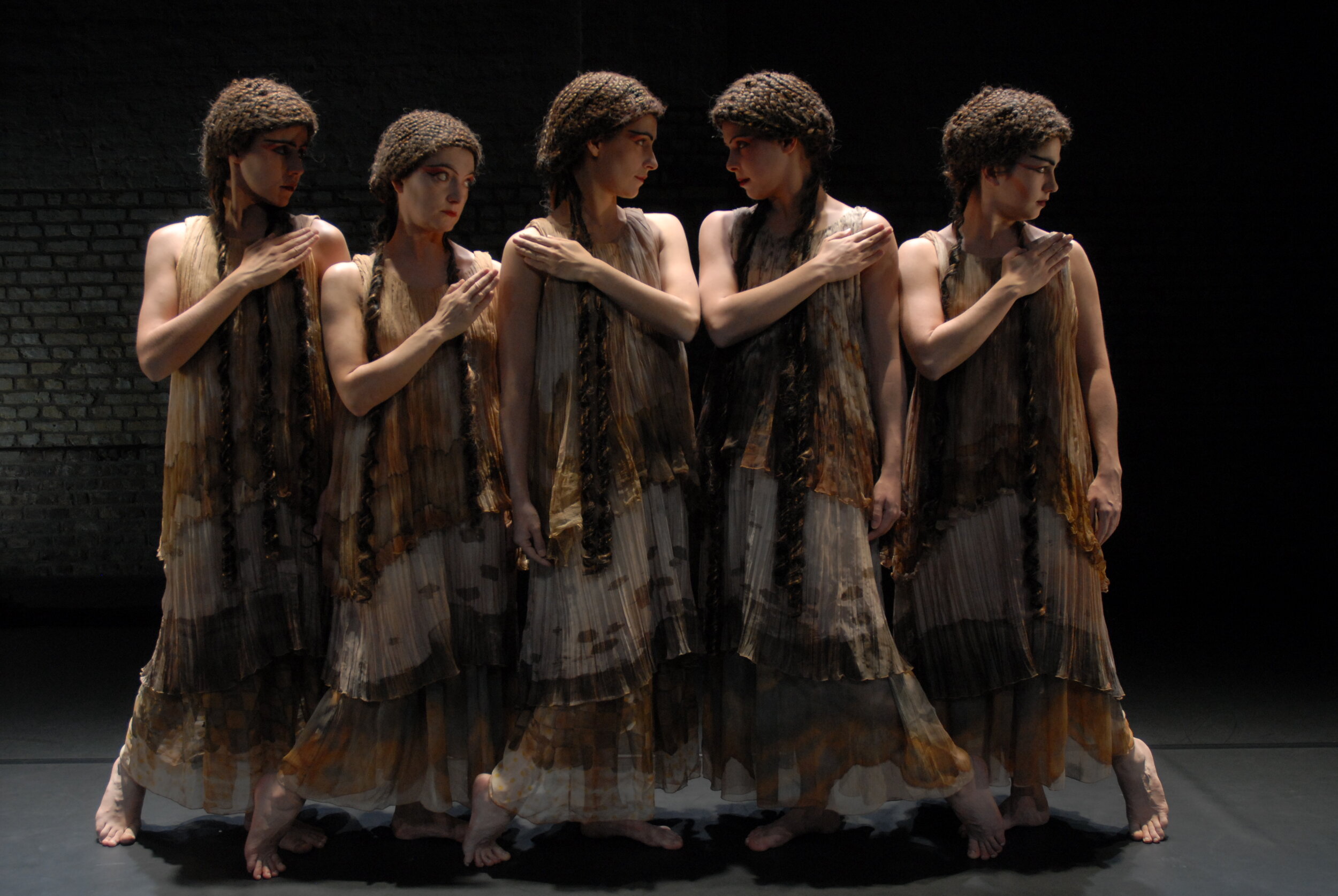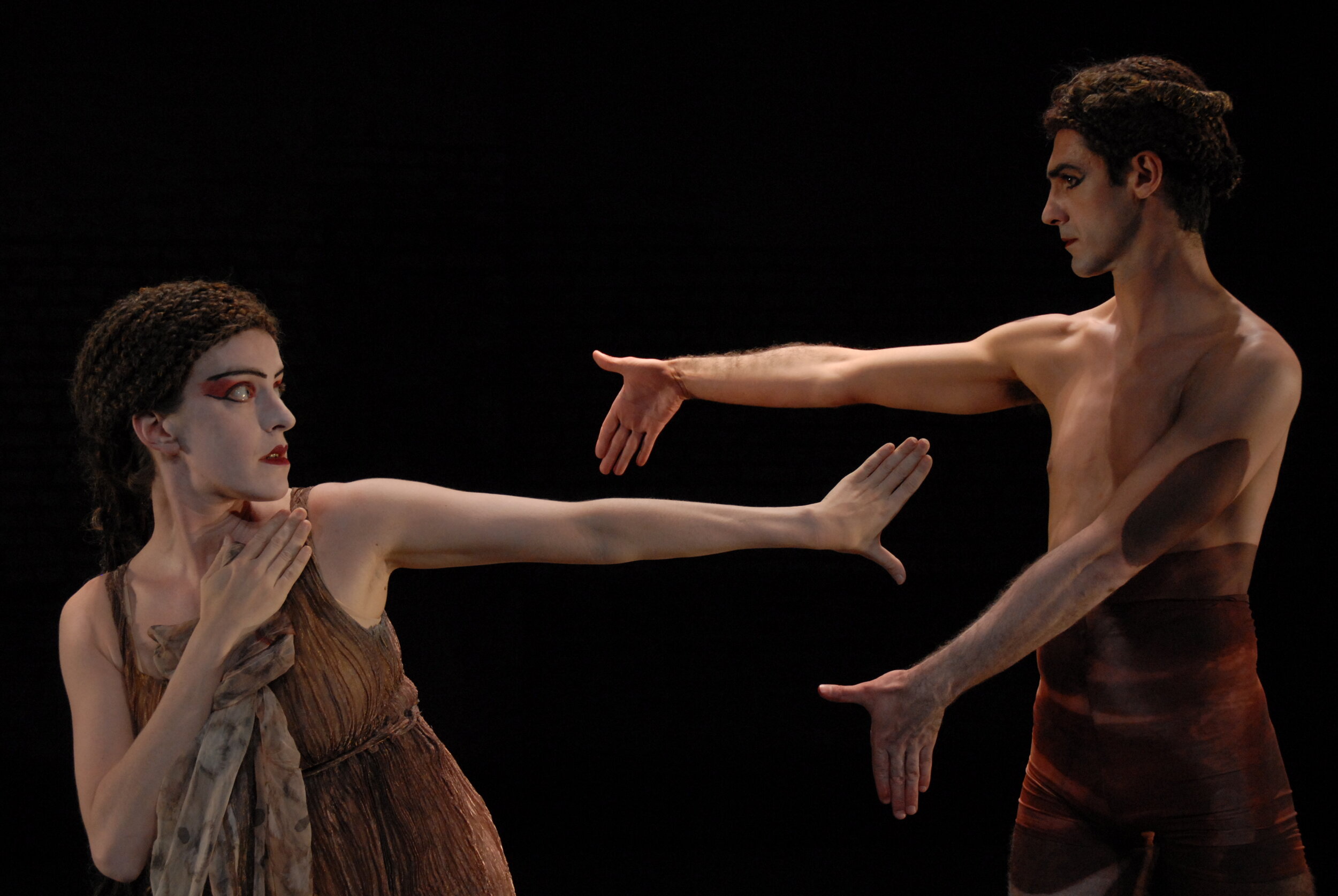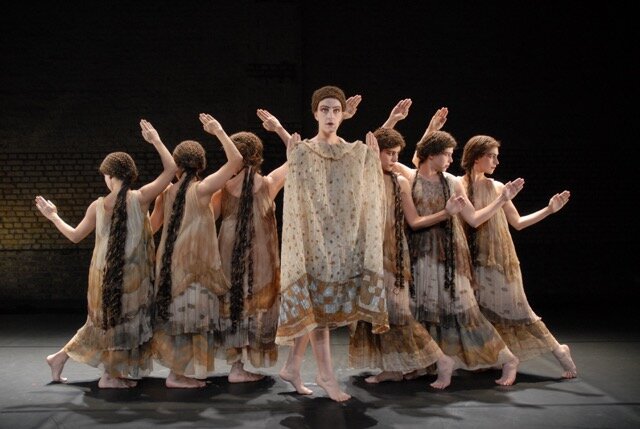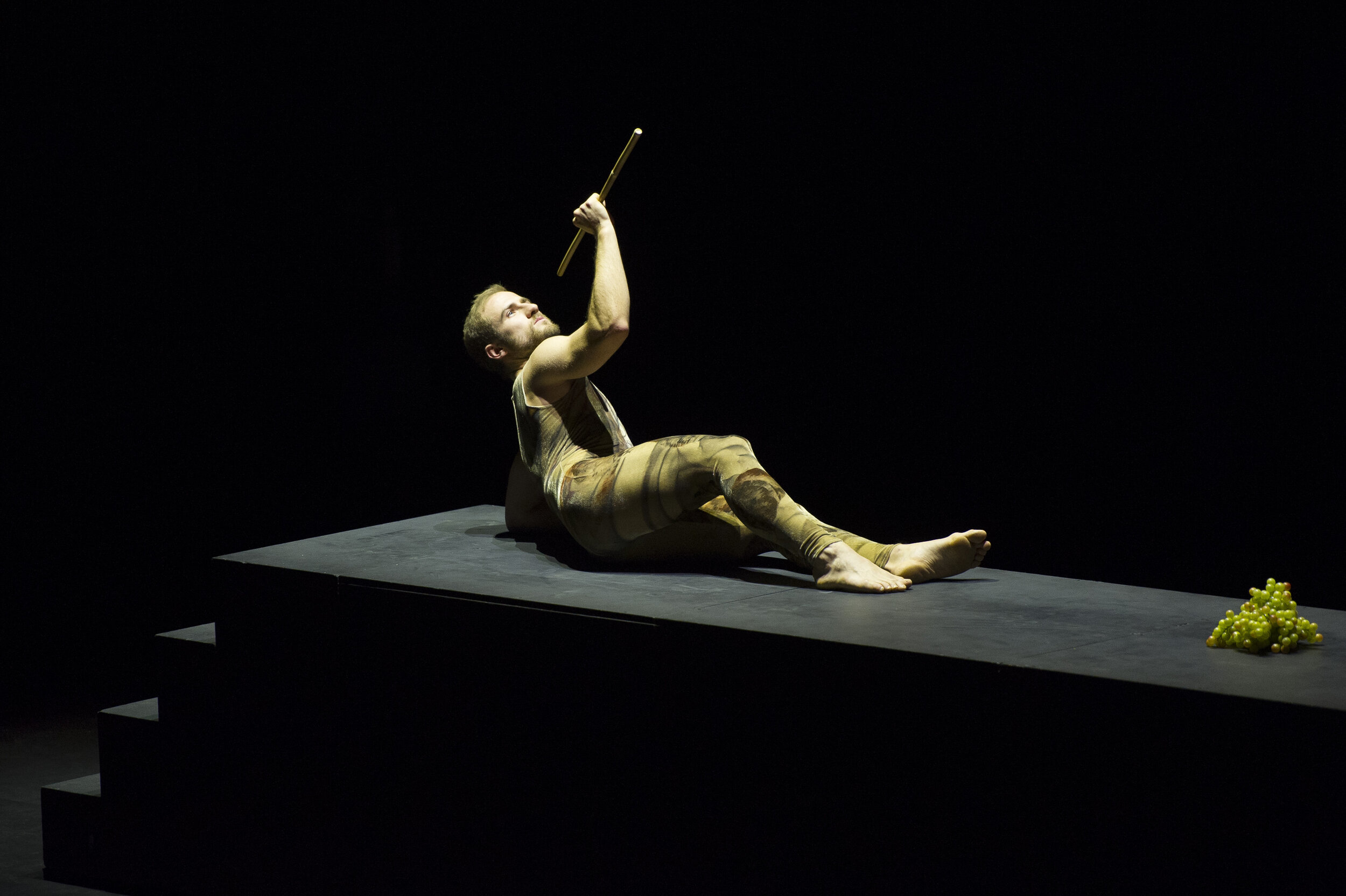Distribution
Conception and choreographic recreation Dominique Brun
inspired by Afternoon of a Faun (1912)
Choreography and notation Vaslav Nijinski
Translation to Labanotation Ann Hutchunson-Guest and Claudia Jeschke
Music Claude Debussy, interpreted by Les Siècles, directed by François-Xavier Roth
inspired by the Stephane Mallarmé poem, and the costumes and set designs by Léon Bakst
With Caroline Baudouin, Clarisse Chanel, Sophie Gérard, Johann Nöhles, Mathilde Rance, Enora Rivière, Julie Salgues, Lina Schlageter
Lighting Sylvie Garot and Raphael Vincent
Costumes Sylvie Skinazi inspired by Léon Bakst
Technical manager Christophe Poux
Photography Ivan Chaumeille
Running time 10 minutes
First performed
2007
Afternoon of a faun
The DVD Le Faune – un film ou la fabrique de l’archive, published by éditions scéren, was released in February 2007.
Afternoon of a Faun, Vaslav Nijinksy’s first work, was first performed by the Ballet Russes (1909-29) and Serge Diaghilev (1872-1929) in Paris at the Théatre du Chatelet on 29th May 1912.
In 1915, Nijinsky undertook the notation of the dance Afternoon of a Faun according to Stepanov’s dance notation system, a notation system he studied when he was training as a dancer at the Mariinsky Theatre in Saint Petersburg. 70 years later, and after thorough examination by the two researchers Ann Hutchinson-Guest and Claudia Jeschke, this score was transcribed into Labanotation (one of the most used notation systems today). This recreation, directed by Dominique Brun, is based on that score’s possibilities.
Reading the score is an exercise in transposition: the signs on the score become incarnate in the dancers’ bodies. As with the interpretation of a literary text or a musical score, Dominique Brun and her dancers take possession of the exception of this exceptional archive in order to produce an interpretation which breathes new life into Nijinsky’s dance. She also uses other documents to develop this recreation: testimonies of critics of the time, including those of Bronislava Nijinska, Nijinsky’s sister, and Baron Adolf de Meyer (1866-1924)’s collotypes. The visual plan, however, is imagined with a distanced eye: the backdrop and the painter and decorator Léon Bakst (1866-1924)’s rock are transposed onto a stripped down stage.




